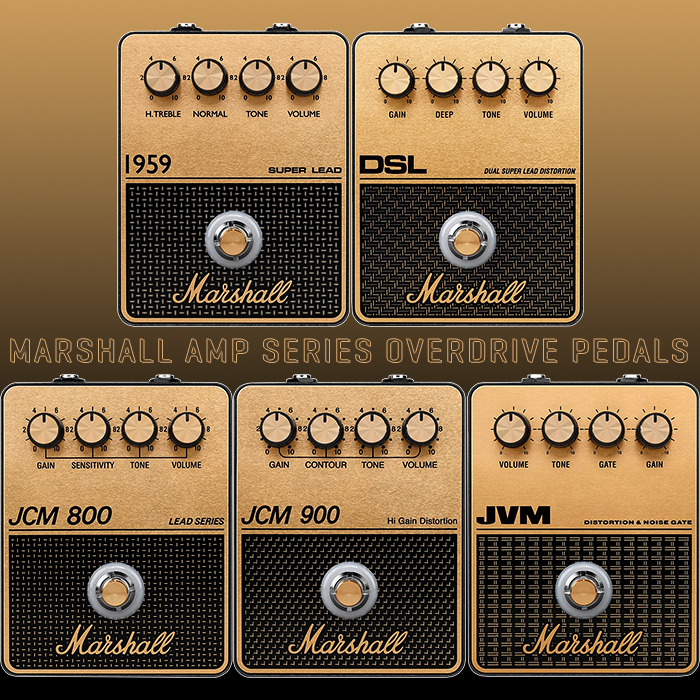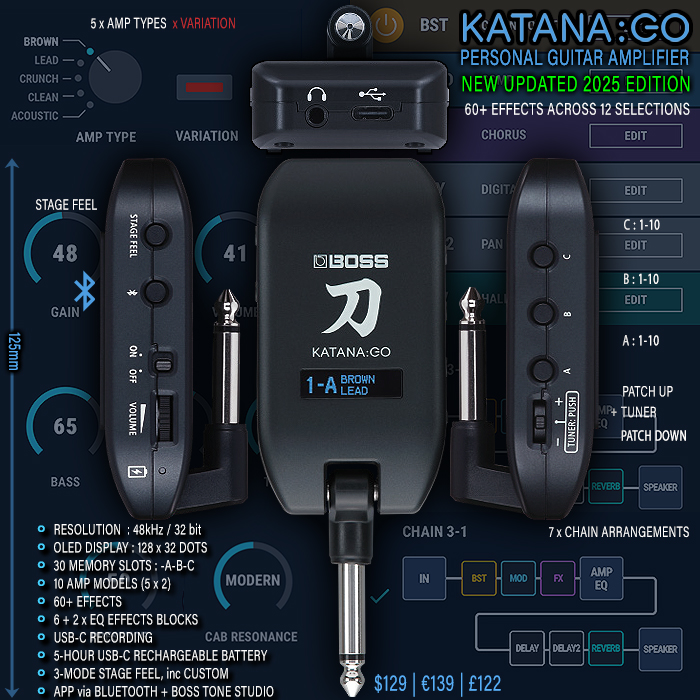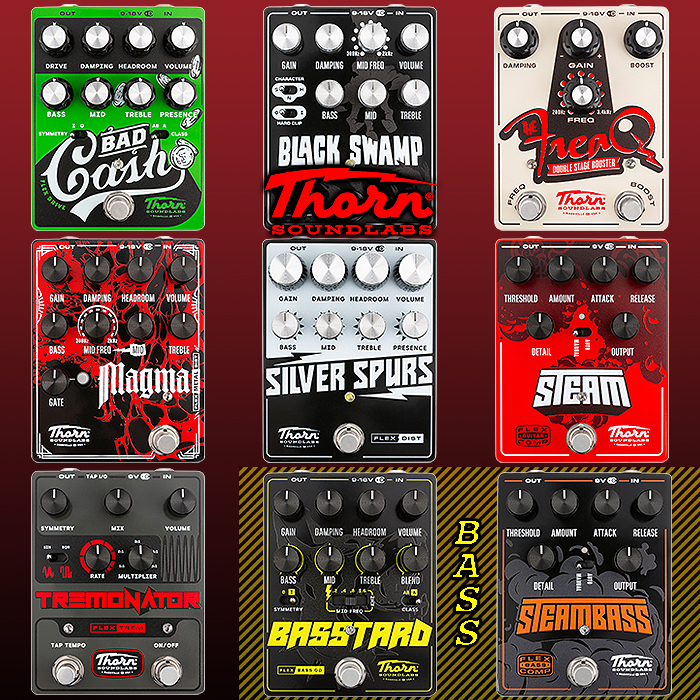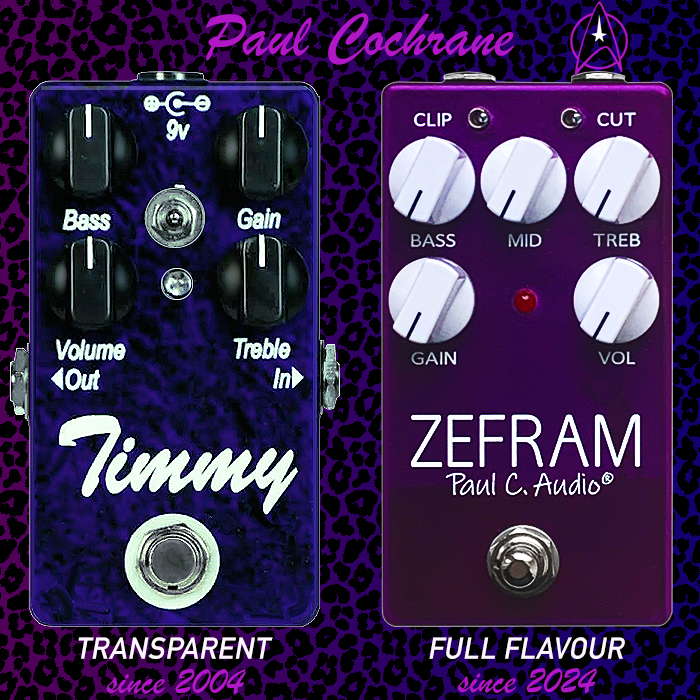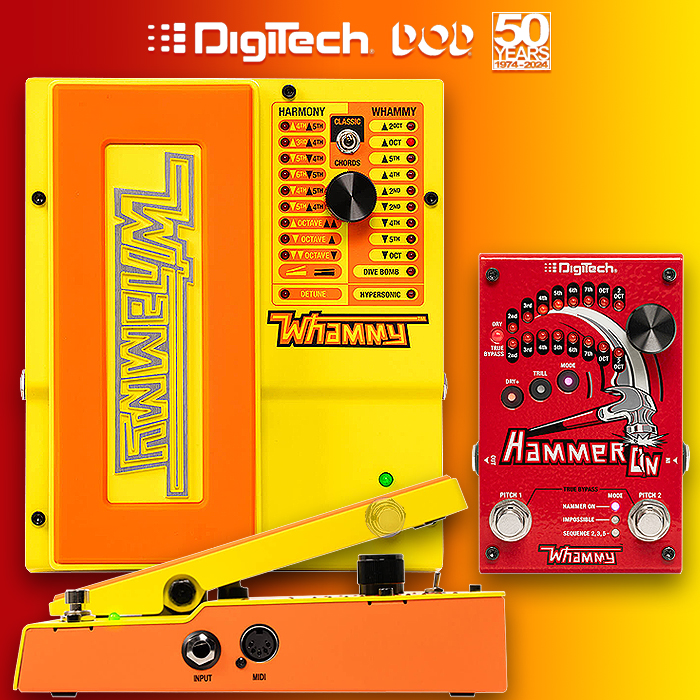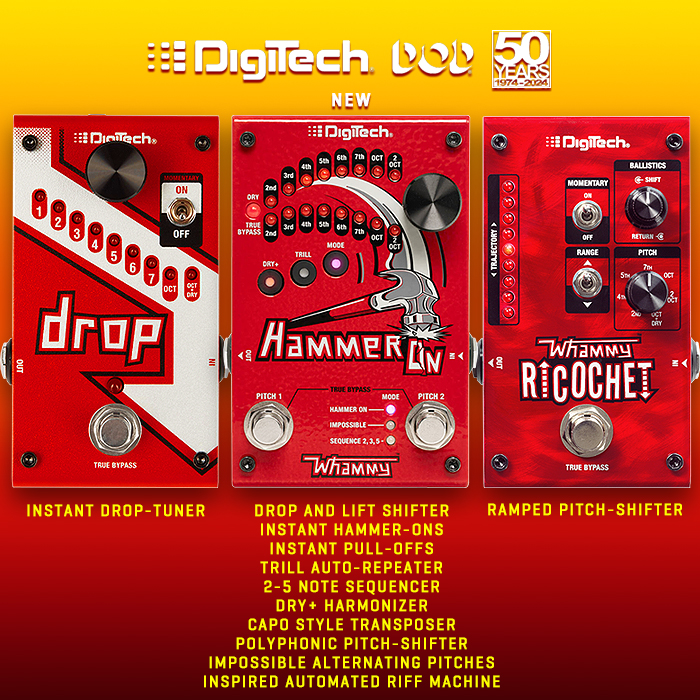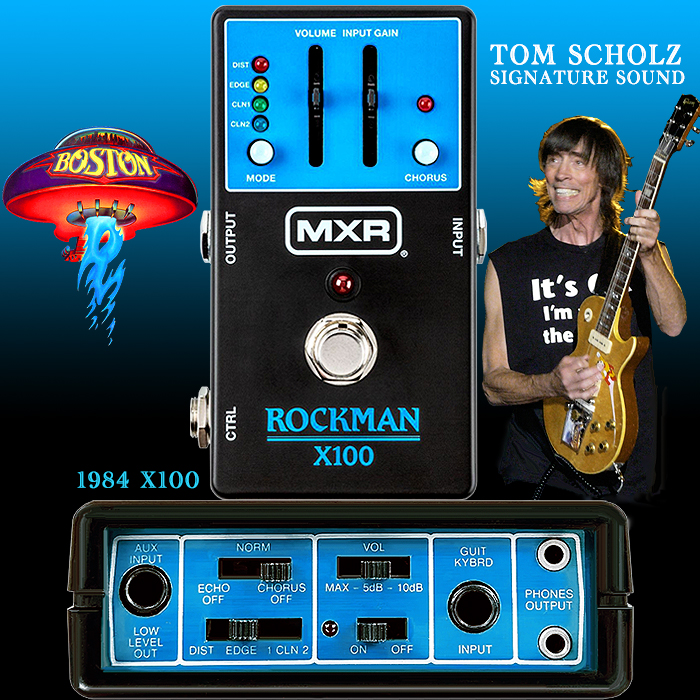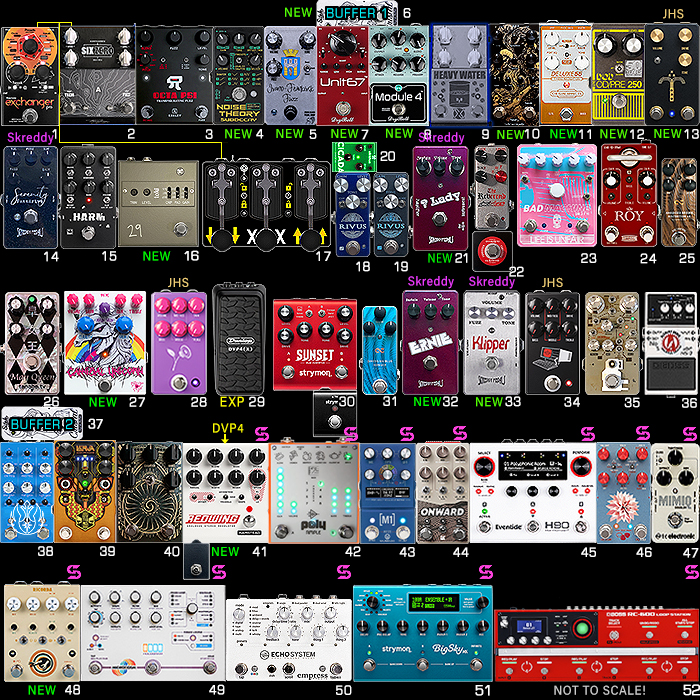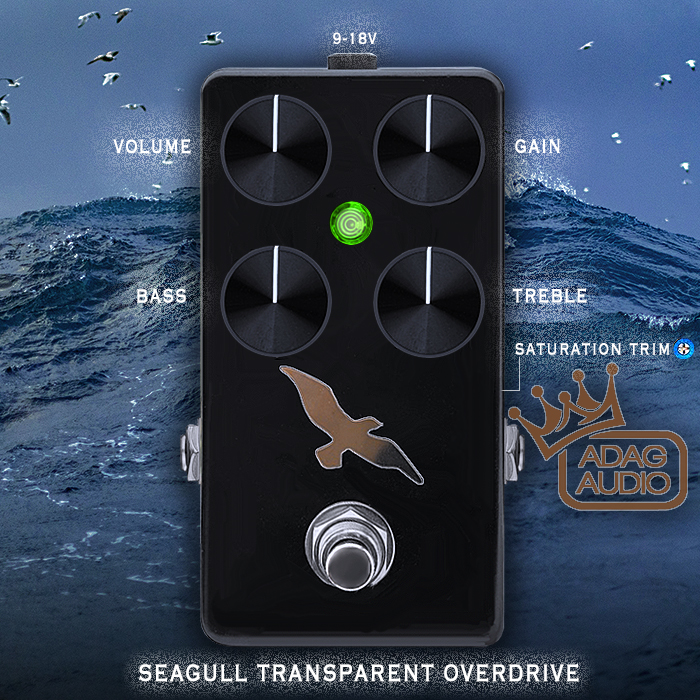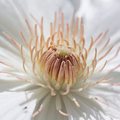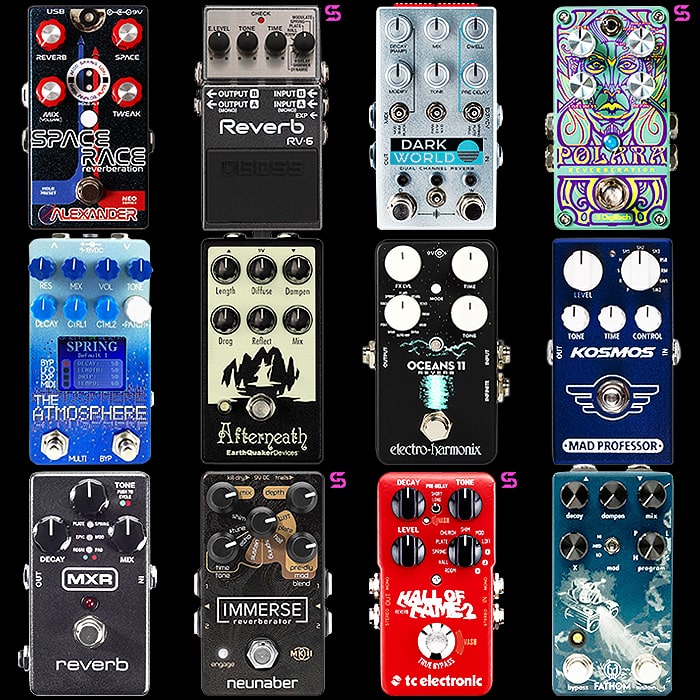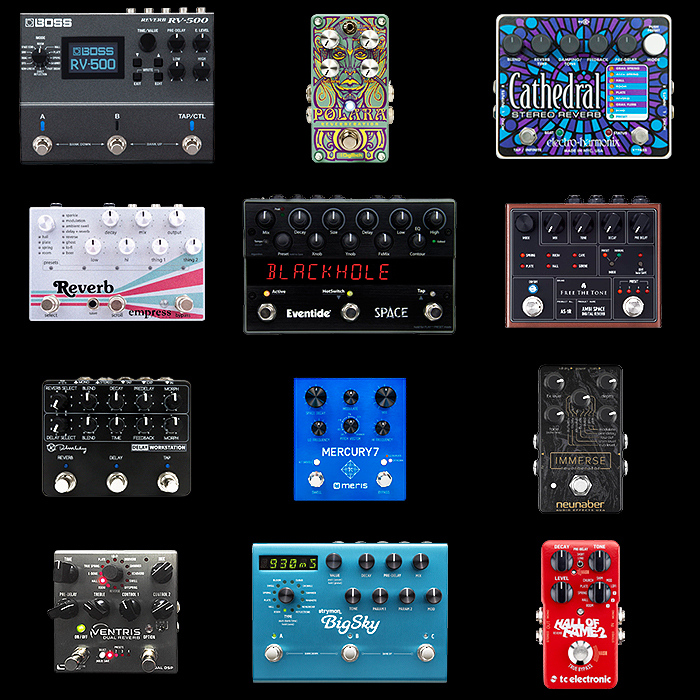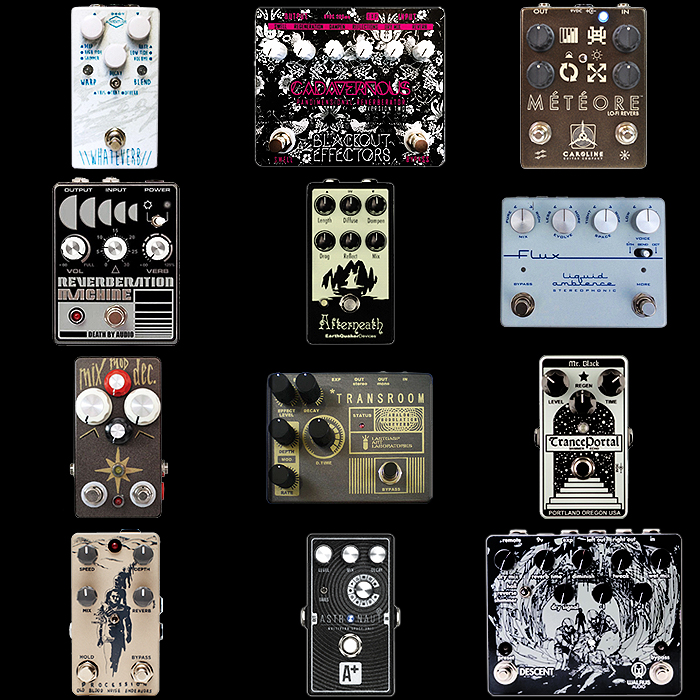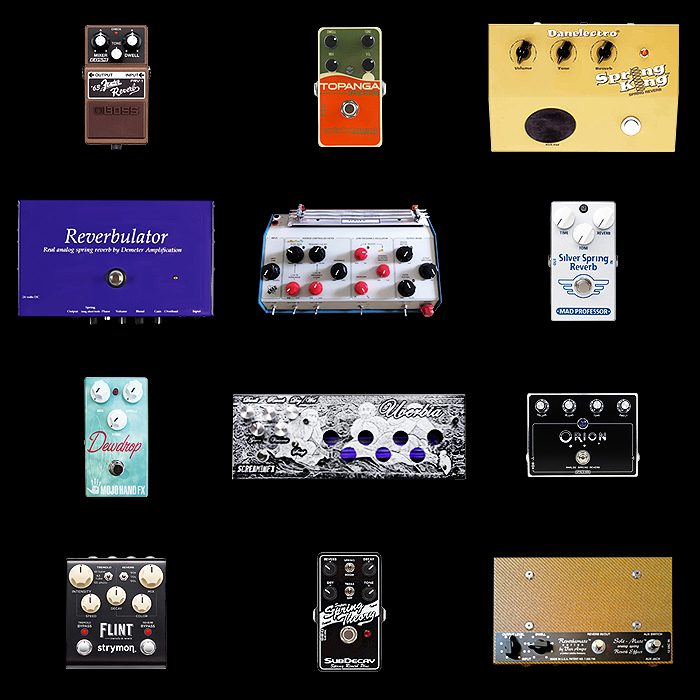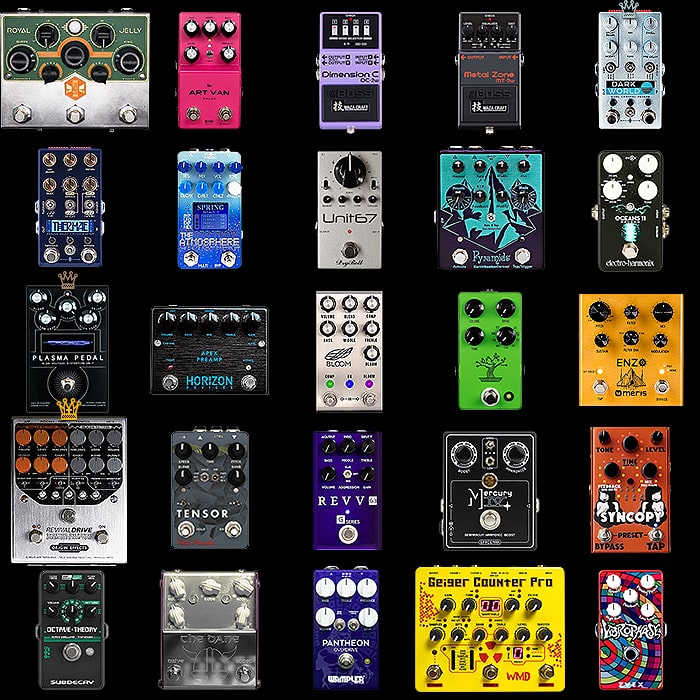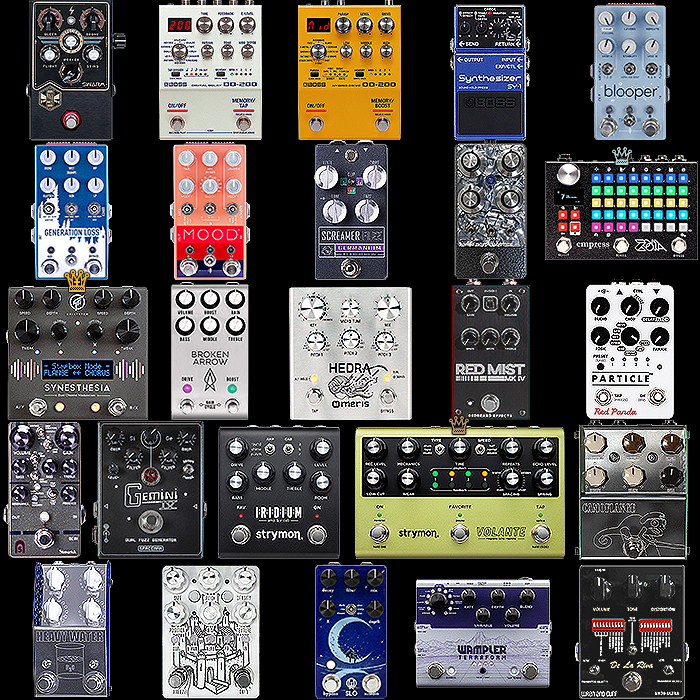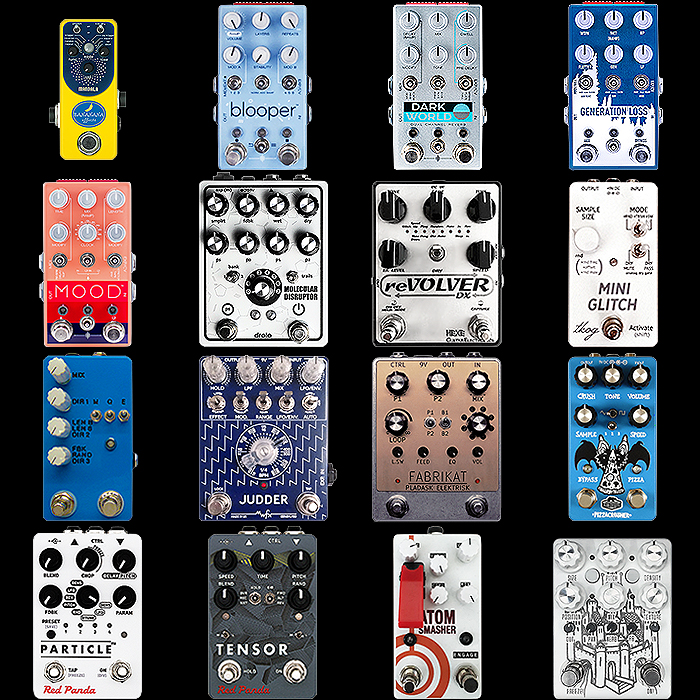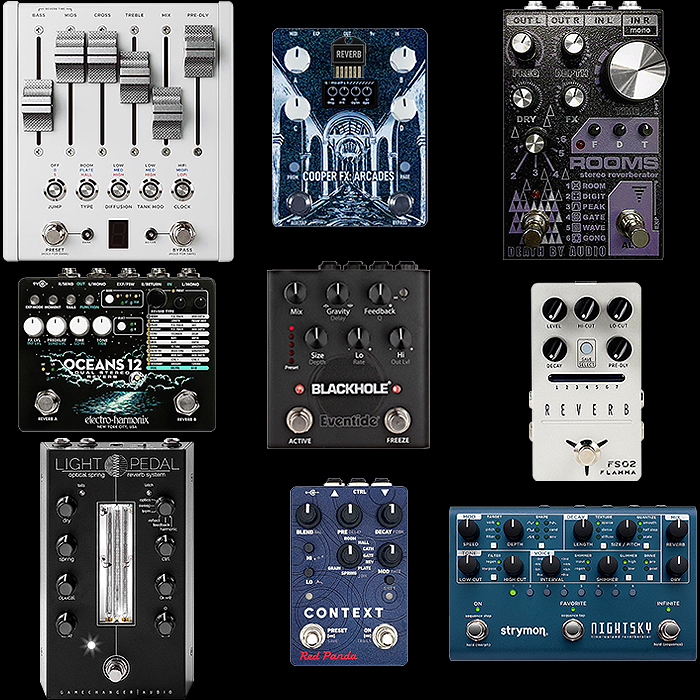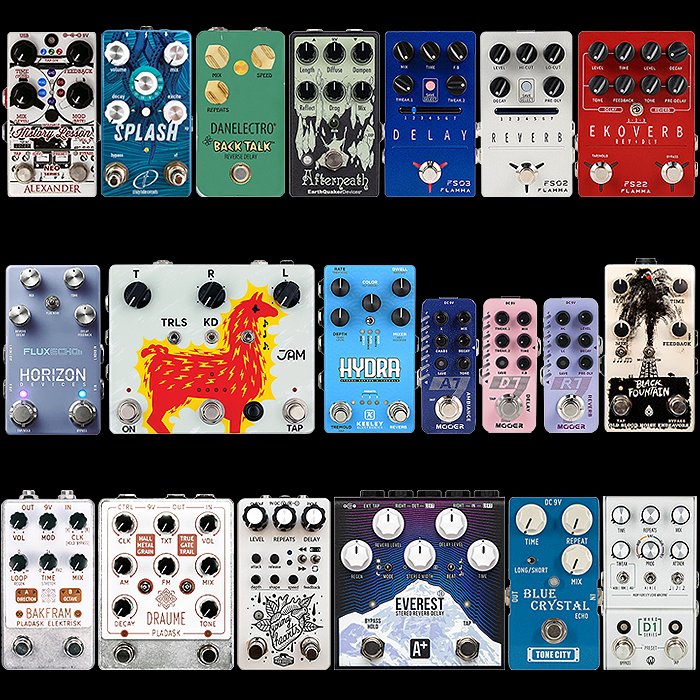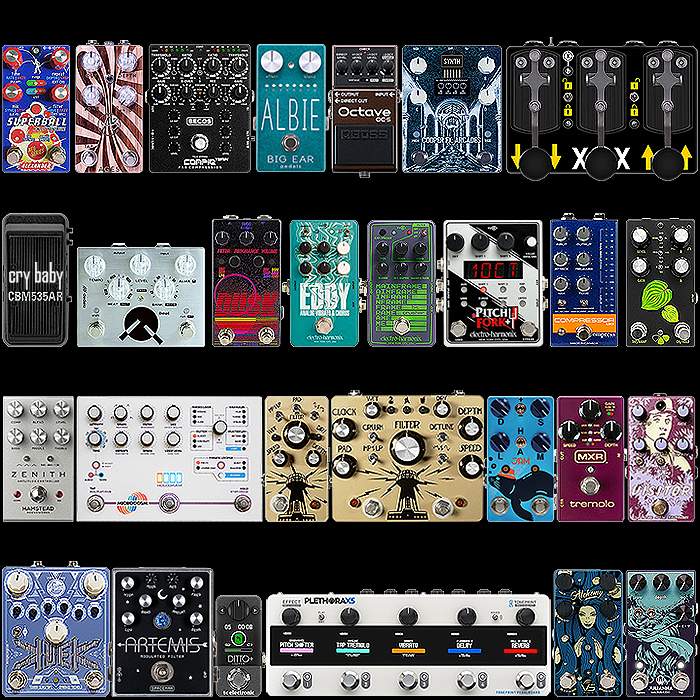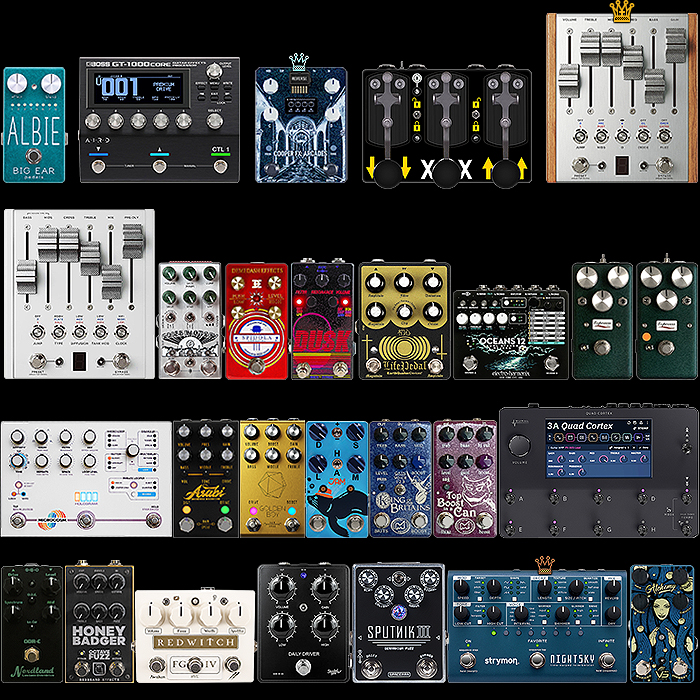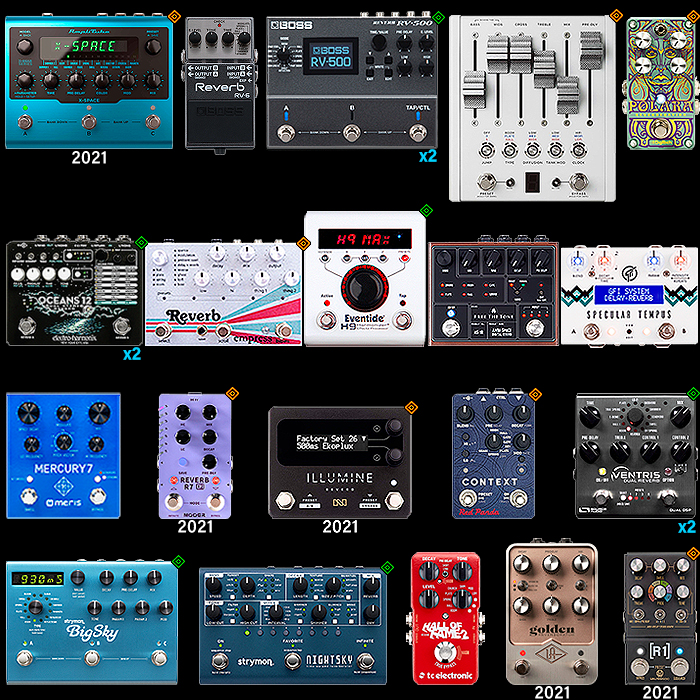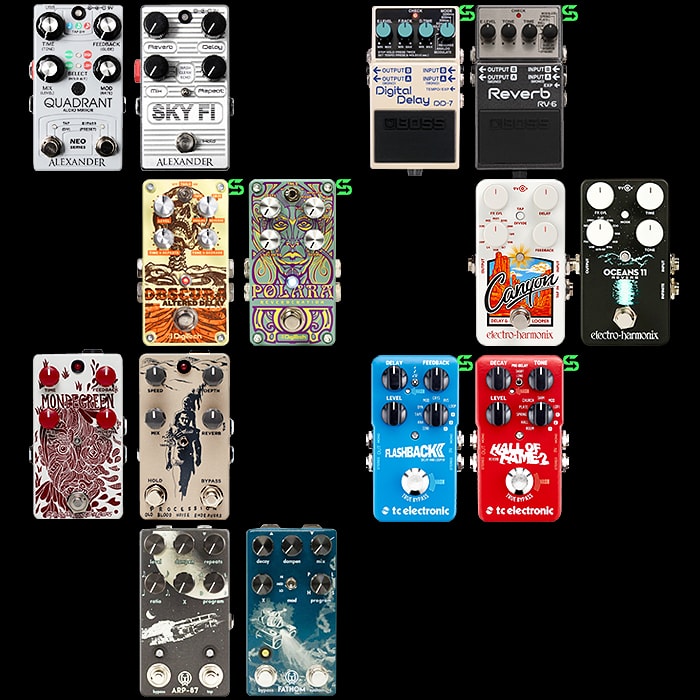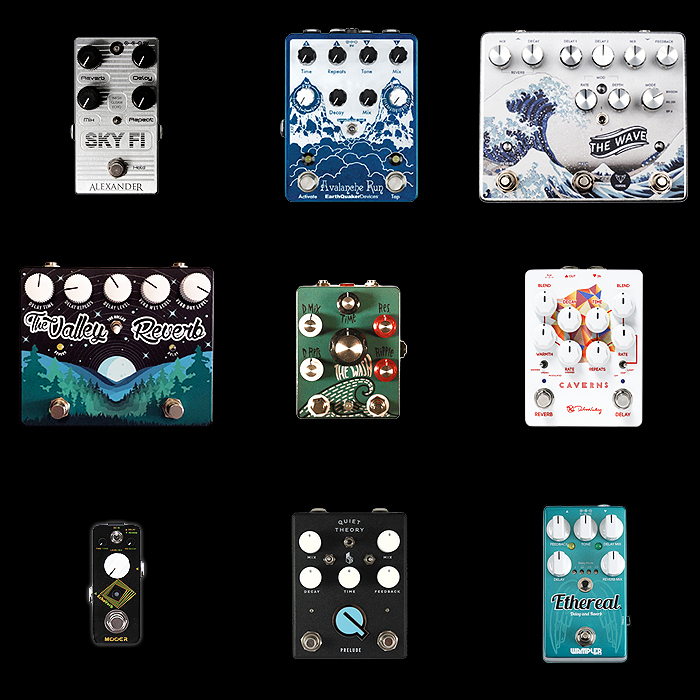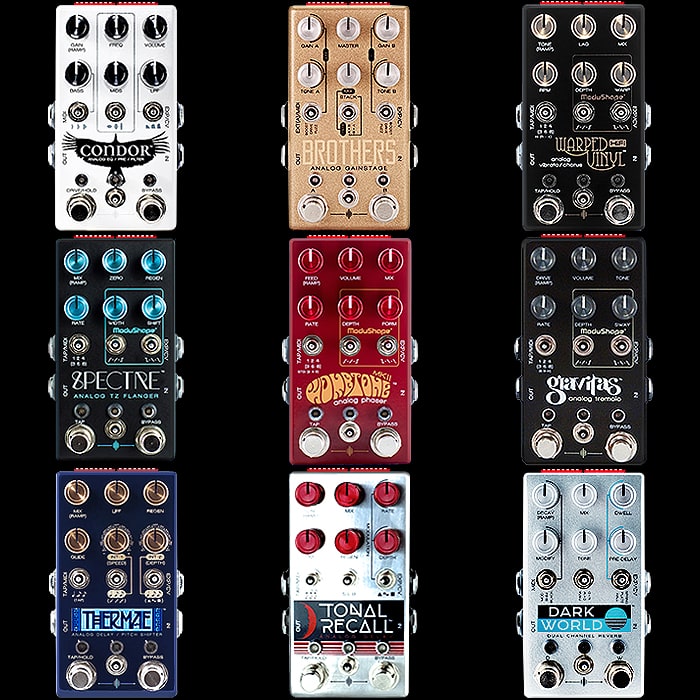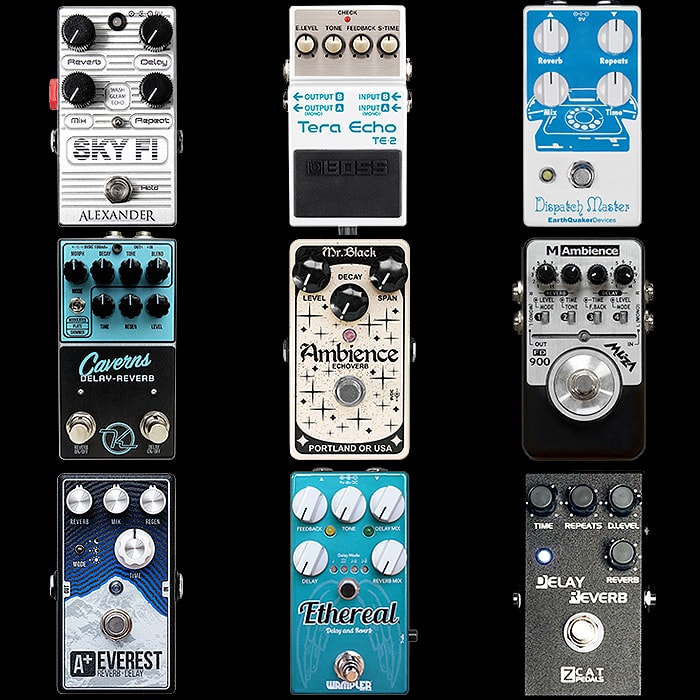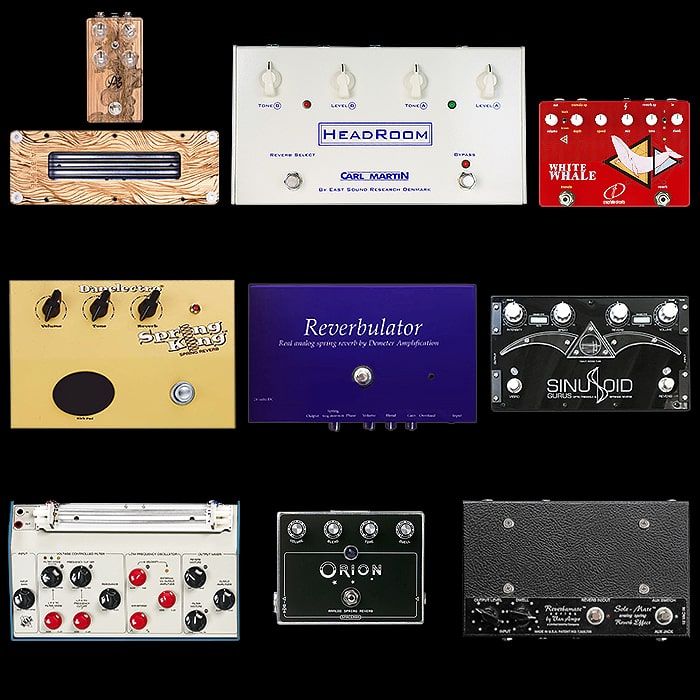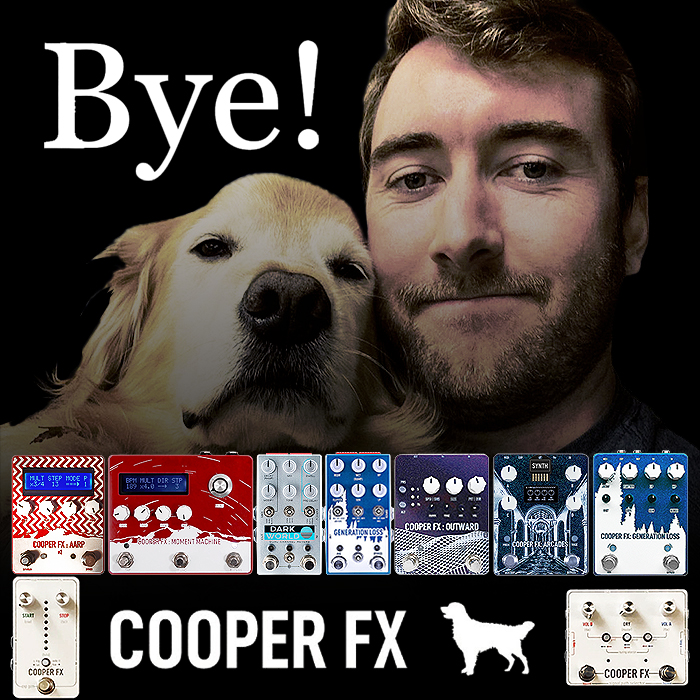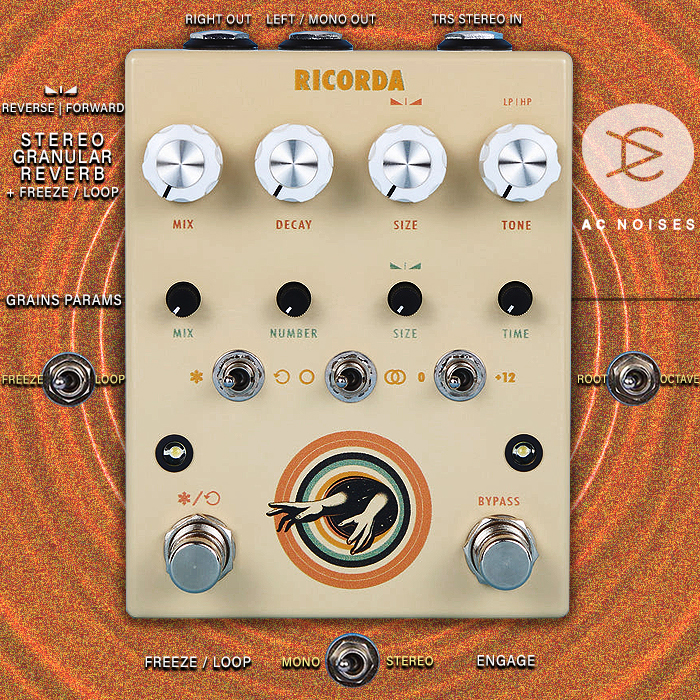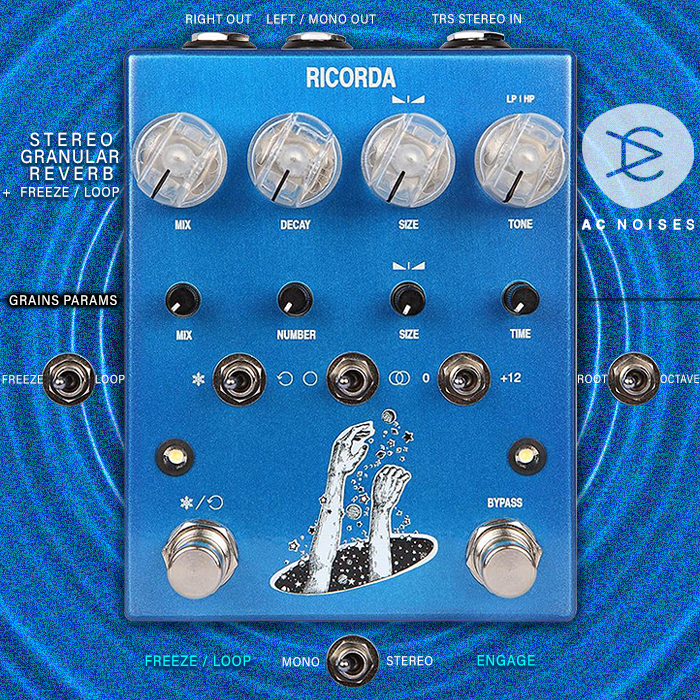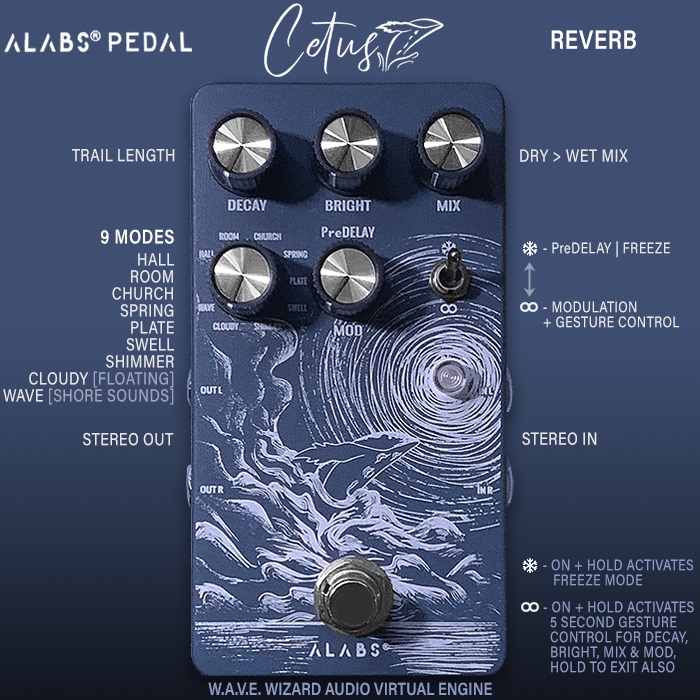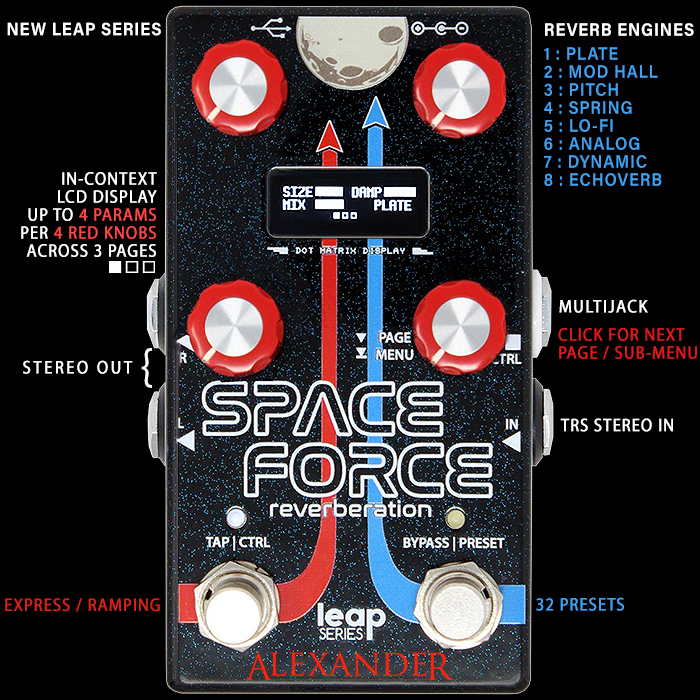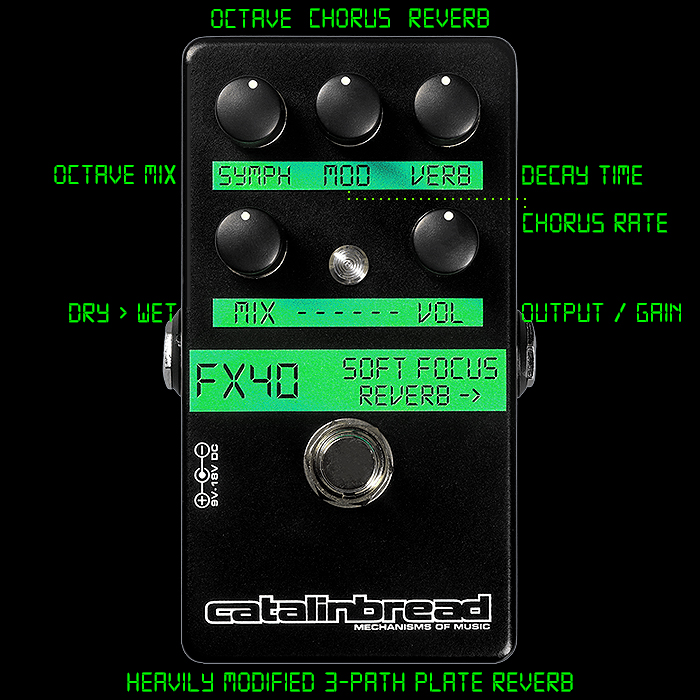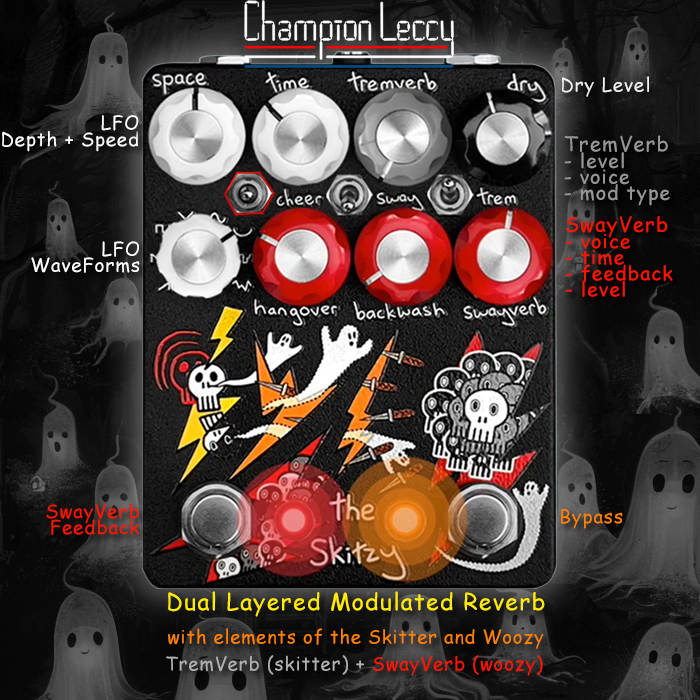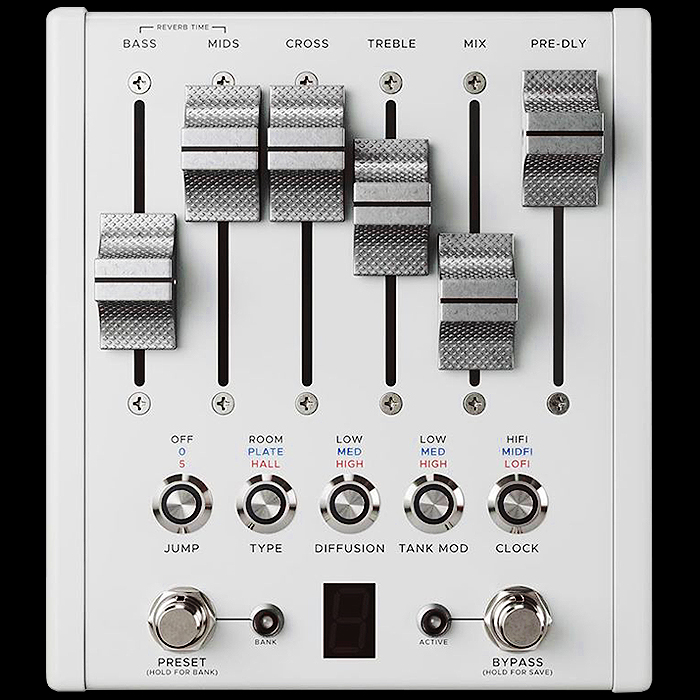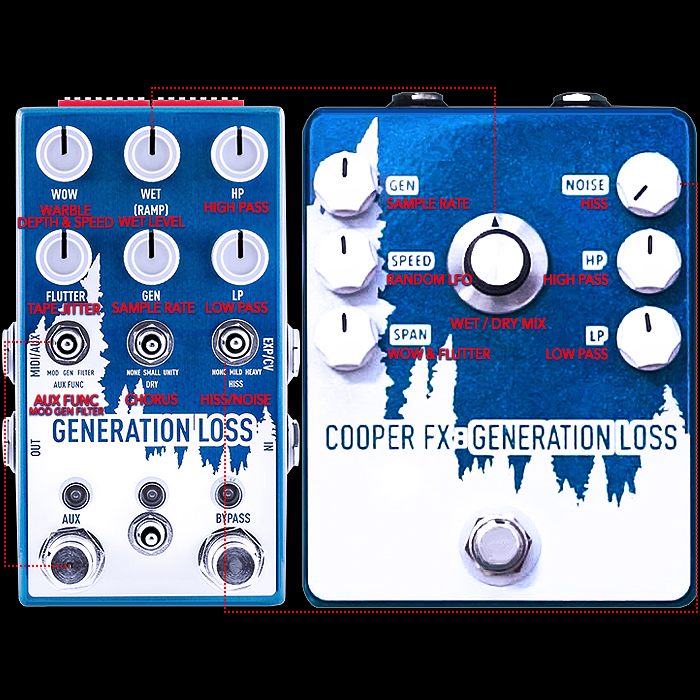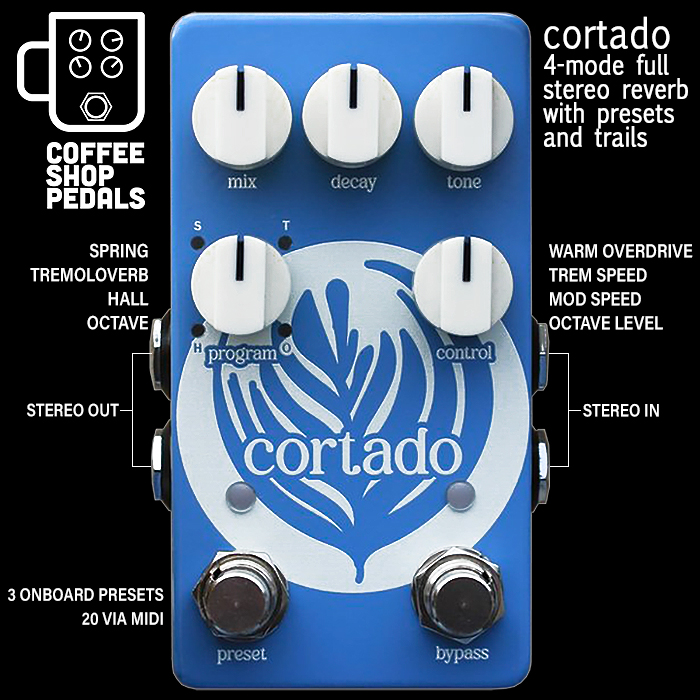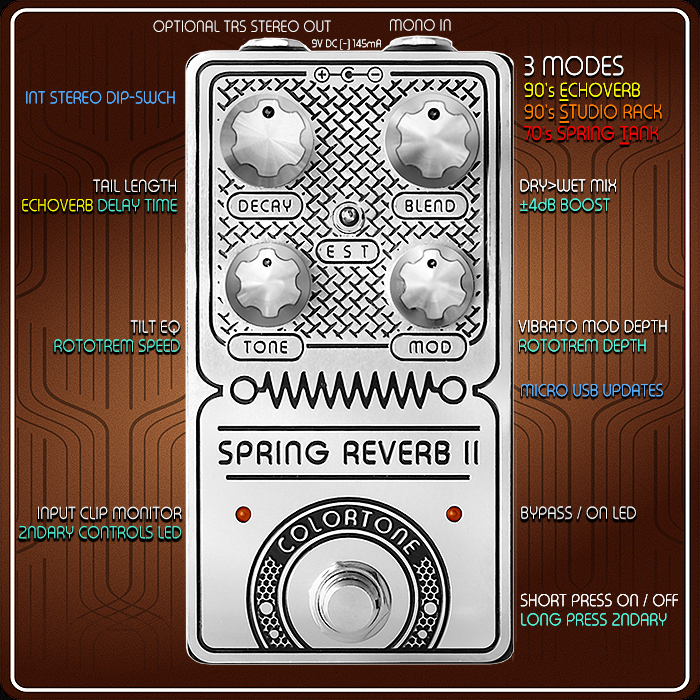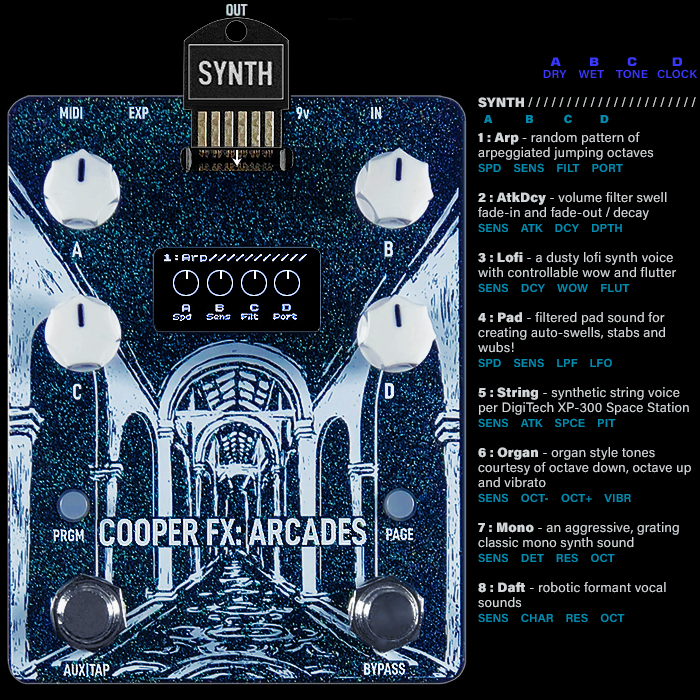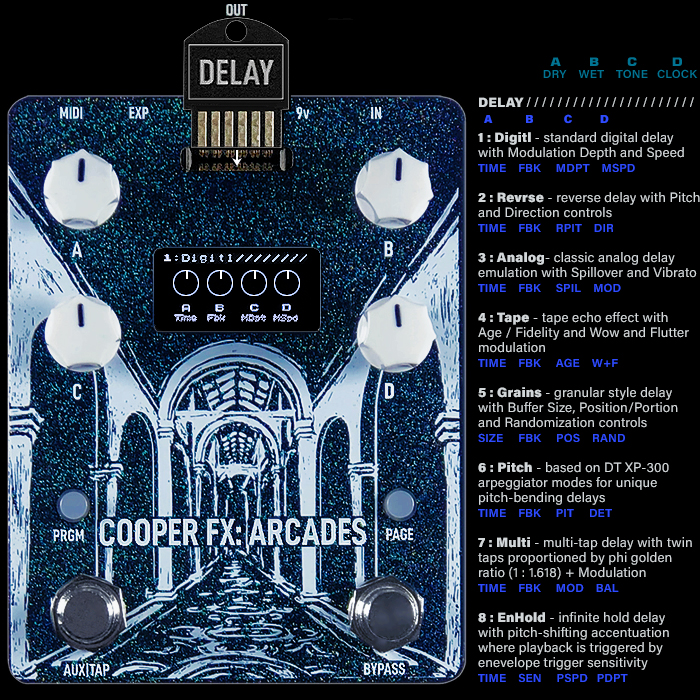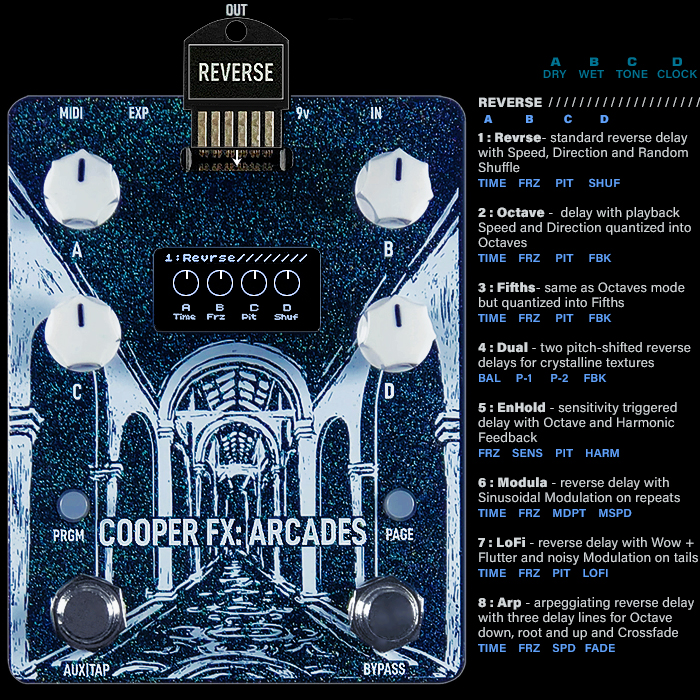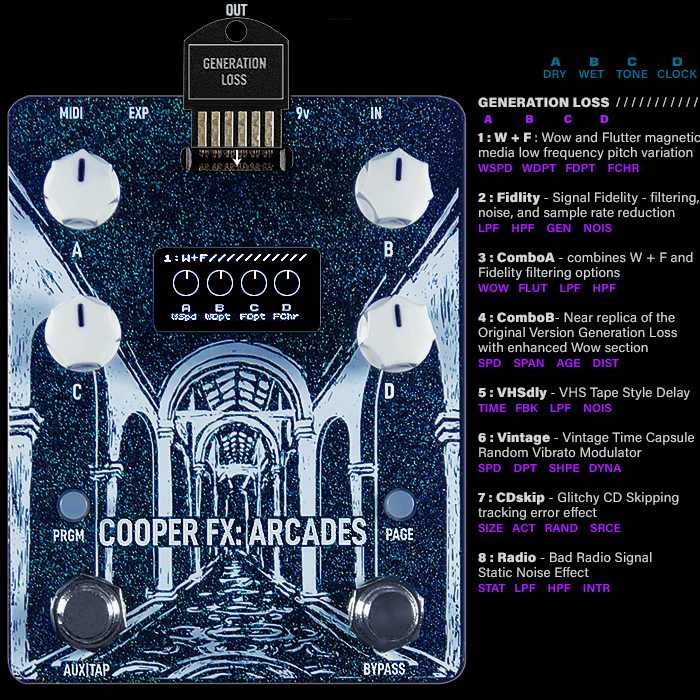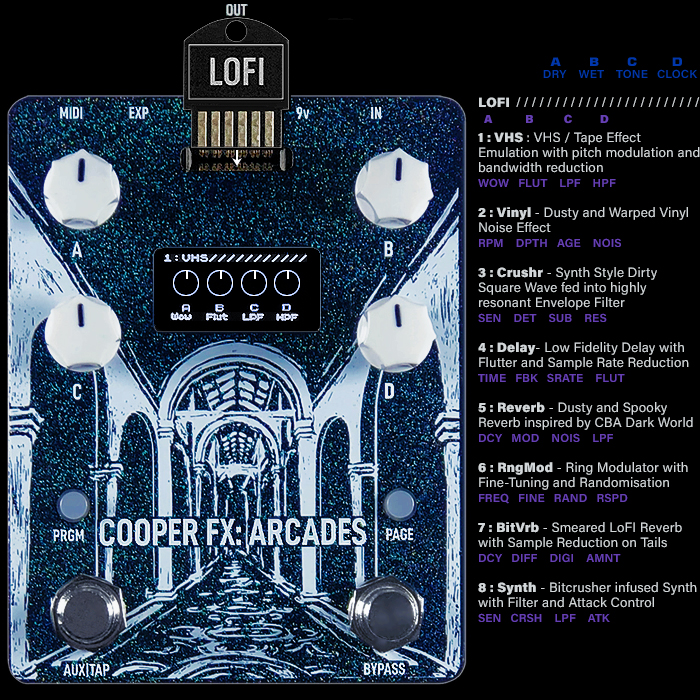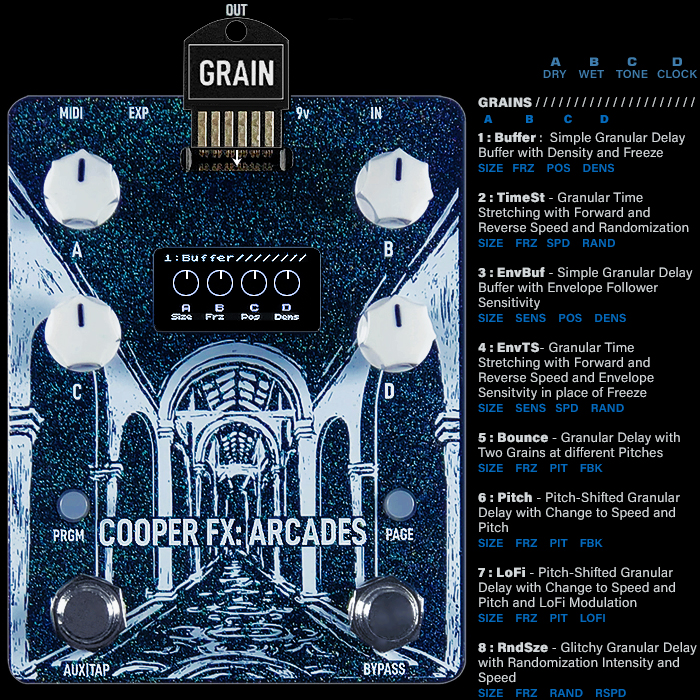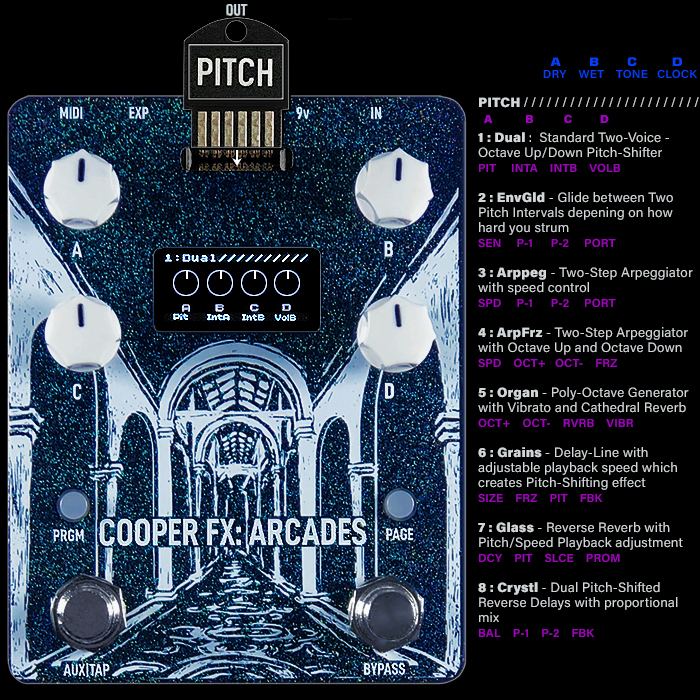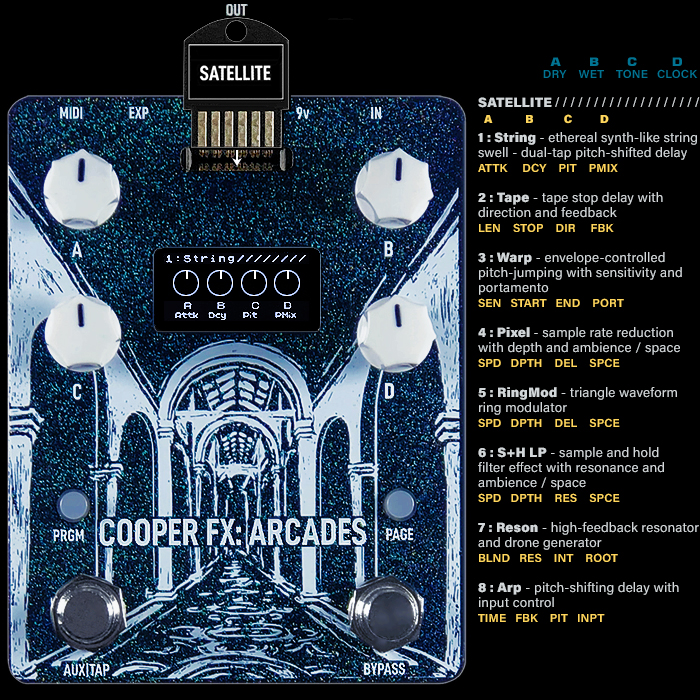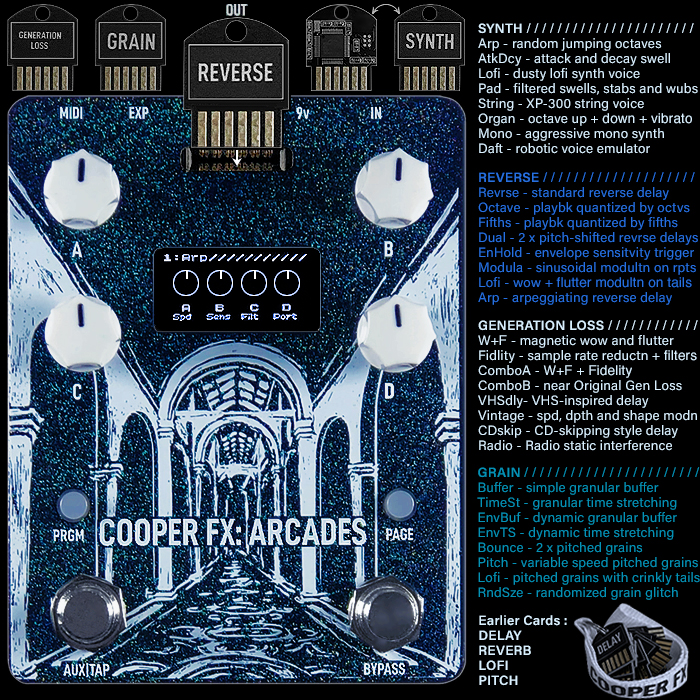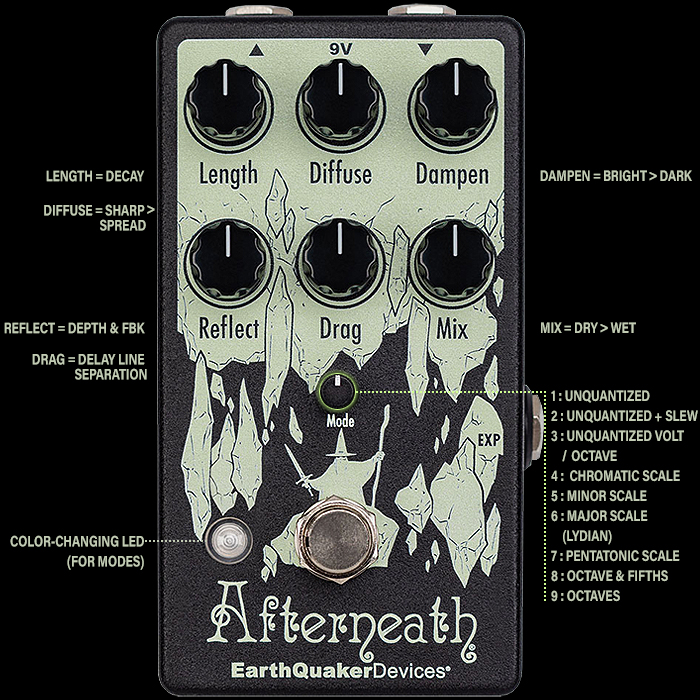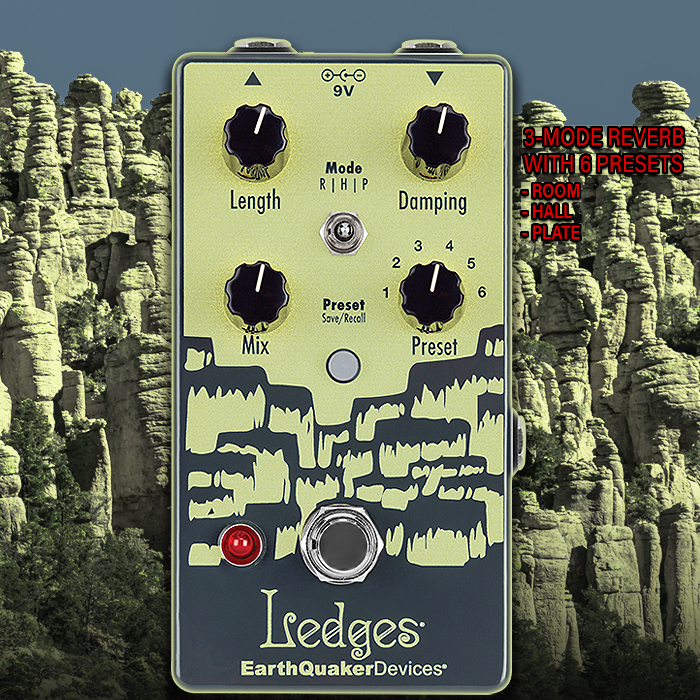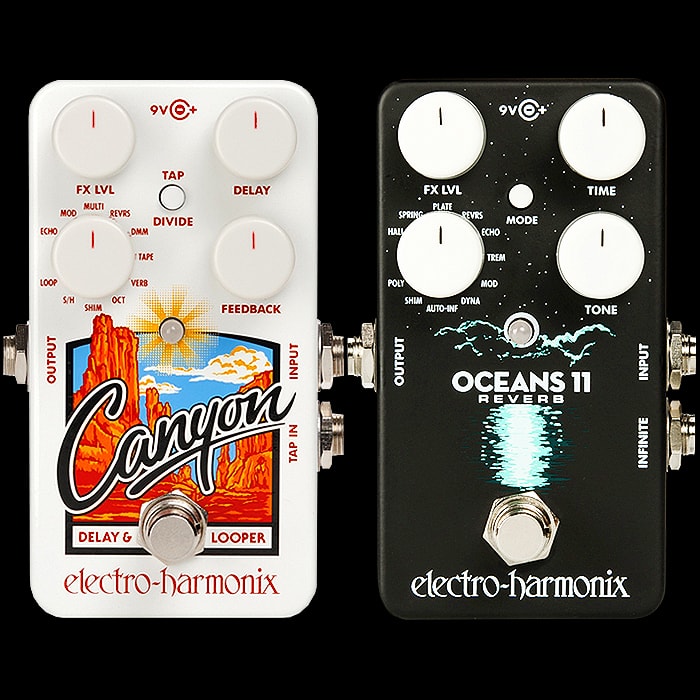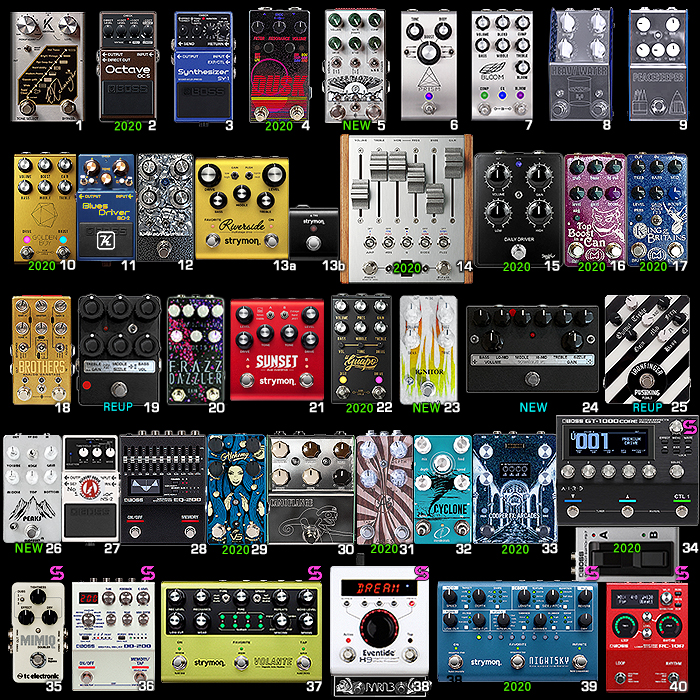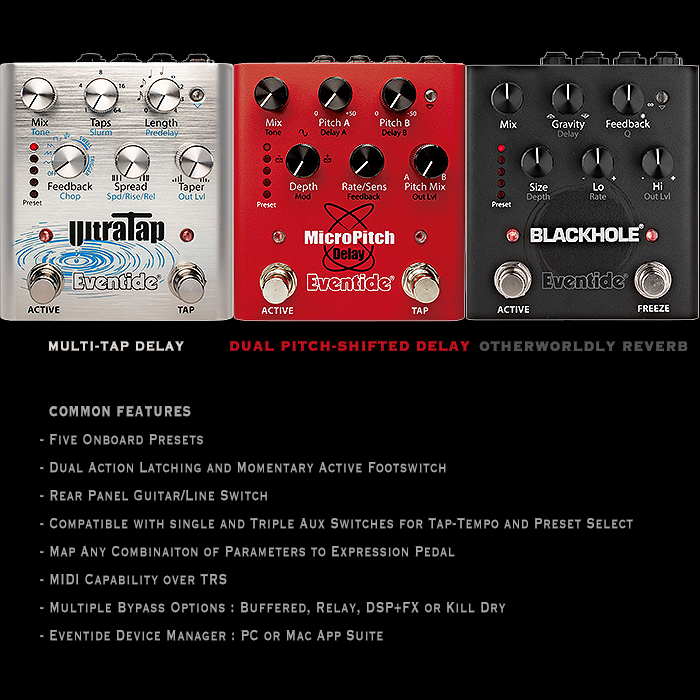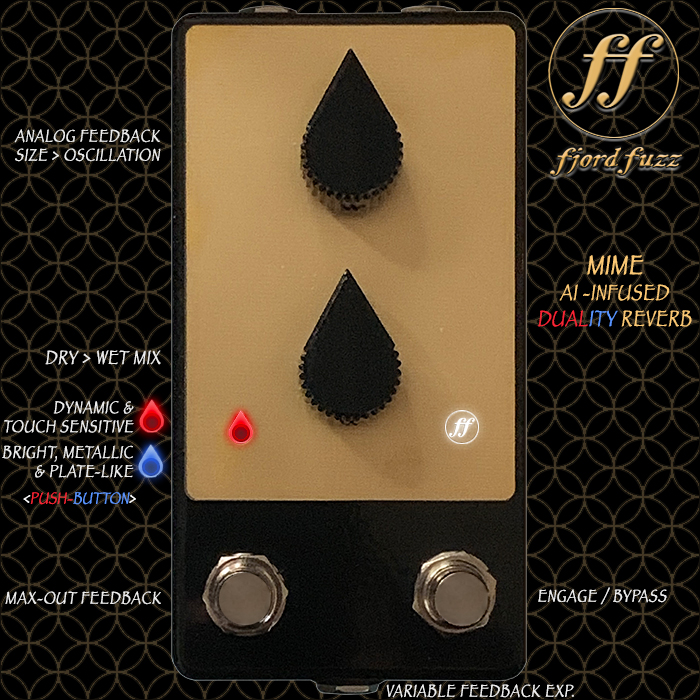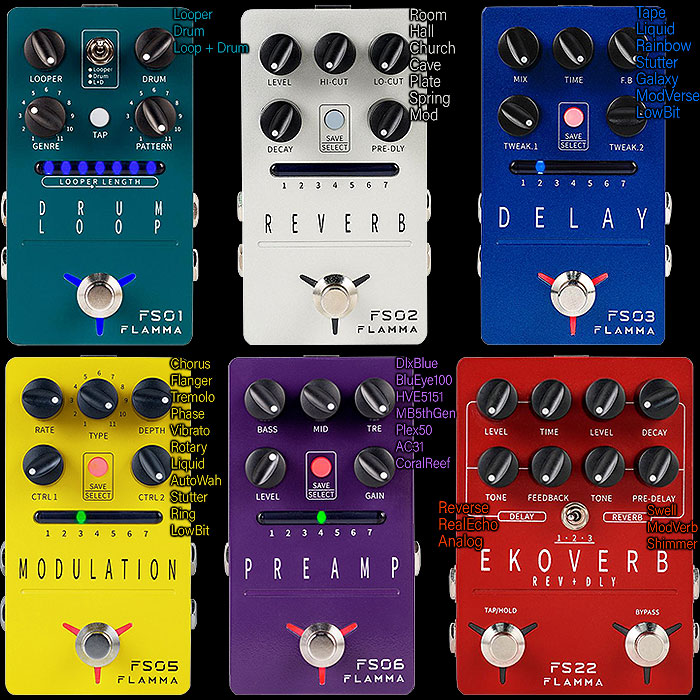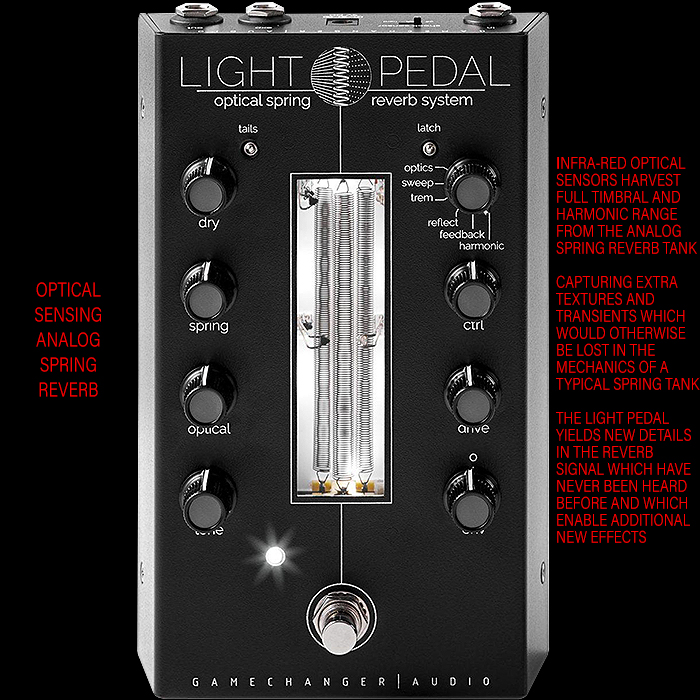Cooper FX Arcades Modular Multi-FX Workstation : Card Spotlight Series #4 : REVERB
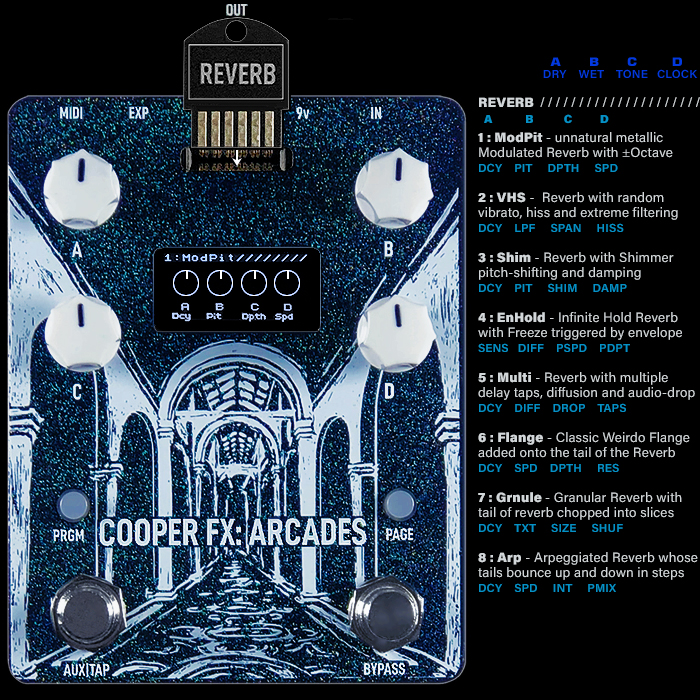
The 4th in my Cooper FX Arcades Card Spotlight series is another seemingly fairly straight-forward variety which actually is rather more surprising than that in several ways. These are not your typical Reverbs at all, go elsewhere for Room, Spring, Hall, Plate and the more vanilla varieties - the Arcades Reverbs are all about Atmospheric Textural Ambience.
While some Reverbs are designed to sit very much in the backdrop of your playing - these are rather more textured, distinct and pronounced and are designed to feature more prominently within your playing - as part of the core sound rather than a subservient backdrop.
Apart from the Flange - which is really quite accentuated, these are actually mostly still rather softly ebbing Reverbs. Certainly plenty of variety to get stuck into. And while you will need to adapt your playing a little here - these have a significant degree of musicality - when applied correctly.
There’s no throw-away or filling-in the numbers variety here - and like some of the other cards where there is occasionally some slightly overlap for a couple or so effects - here this selection is all pretty distinct.
Some of these reverbs seem to have some pre-delay within the algorithm - which makes for more of a call-and-response style of playing - and a somewhat more languid style of phrasing.
Generally there’s quite a few nuances to be aware of here both in terms of how you setup your algorithm, and how you play to it.
I found myself fairly liberally adjusting the common settings - Dry, Wet, Tone and Clock Rate :
Tip 1 - You nee to be careful with the degree of Wet signal as some of these Reverbs can otherwise be overly dominant within the signal
Tip 2 - Several of these presets sound great with 0 Dry - so do experiment on that score
Tip 3 - Adjust the Clock Rate CCW for more texture and more lo-fi sounds
Tip 4 - Adjust your playing to slower and more languid strokes as such - some of these Reverbs have a slight pre-delay component to them, so they don’t respond particularly fast to your playing - i.e. tendency towards slower attack
1 : ModPit - Unnatural Metallic Sounding Modulated Reverb with ±Octave on the tails
A sort of Post Industrial / Post-Apocalyptic drone reverb in the lower register as I have it - suitable for marking cinematic score time for when the evil empire is advancing on our plucky rebels. Definitely has a sort of Sci-Fi Industrial feel to it.
- A : DCY - Decay / Sustain of Reverb Tails, max CW freezes signal and mutes incoming audio
- B : PIT - Pitch - determines amount of ±octave CCW / CW
- C : DPTH - Depth - amount of Vibrato / CCW or Chorus CW added to signal
- D : SPD - Speed of Modulation
Example / Preferred Settings :
'A' 'B' 'C' 'D'
(3) (7) (8) (12) o'clock (7 is min, 5 is max)
2 : VHS - Video Tape style Reverb with Random Vibrato, Hiss, and Extreme Filtering
Sort of Atmospheric Swirly Storm of a Reverb in my preferred settings. This to me sounds like the start of an angry storm - the sort of upper atmosphere swirling of clouds before thunder and lighting break out!
- A : DCY - Decay / Sustain of Reverb Tails, max CW freezes signal and mutes incoming audio
- B : LPF - Low Pass Filter - sets cutoff frequency for filter
- C : SPAN - Depth of the Random Vibrato Modulation
- D : HISS - Introduces random crackles, static noise and other artefacts into the reverb tails
Example / Preferred Settings :
'A' 'B' 'C' 'D'
(3) (2) (10) (5) o'clock (7 is min, 5 is max)
3 : Shim - Reverb with pitch-shifted Shimmer and damping
An angels' chorus as I see the shimmery accents - albeit you need to apply the damping judiciously as otherwise you get spiky Harpies instead of beautiful angelic shimmer. The DAMP control needs to be quite far up - while too far means you loose any accentuation. You need to run tests on the High E string and then adjust to taste. Having no Damping leads to painfully bright ice-pick-like ear-aggravation.
- A : DCY - Decay / Sustain of Reverb Tails, max CW freezes signal and mutes incoming audio
- B : PIT - Pitch Interval for the Shimmer
- C : SHIM - Blend between Shimmered and non-Shimmered Reverb
- D : DAMP - A Low Pass Filter that tempers / cuts high frequencies / ice-pickiness that you can get with Shimmer
Example / Preferred Settings :
'A' 'B' 'C' 'D'
(3) (3) (2) (4) o'clock (7 is min, 5 is max)
4 : EnHold - Infinite Hold Reverb with Freeze and Diffusion triggered by Envelope
With my settings, I would describe it as a somewhat smeared oscillating pulse. This is distinctly more of a pulse vs the somewhat smoother undulation of the Arp mode.
- A : SENS - Sensitivity of Envelope Detector / Follower
- B : DIFF - Degree of Diffusion / Smearing of delay taps
- C : PSPD - Speed of Pitch Blending
- D : PDPT - Depth of Pitch Blending
Example / Preferred Settings :
'A' 'B' 'C' 'D'
(3) (5) (2) (11) o'clock (7 is min, 5 is max)
5 : Multi - Reverb with Multiple delay taps, Diffusion and Audio-drop
Multi-tap with diffusion and Audio-Drop makes for actually quite an elegant soft flutter of an effect as I have it in my preferred settings. You can obviously accentuate the flutter by maxing out the DROP and TAPS parameters - and in fact driving up DIFF. Max Diffusion gives you a different sort of accentuation - which I prefer to back off a little - per my below settings.
- A : DCY - Decay / Sustain of Reverb Tails, max CW freezes signal and mutes incoming audio
- B : DIFF - Amount of Diffusion and Smearing of Taps - turning it up actually accentuates the Taps, while tempering it slightly softens the Taps - as I have it
- C : DROP - Random Drop-out, Muting of Taps for more accentuated flutter
- D : TAPS - Level and amount of Taps audible - more evident in every way fully CW
Example / Preferred Settings :
'A' 'B' 'C' 'D'
(3) (2) (12) (5) o'clock (7 is min, 5 is max)
6 : Flange - Reverb with Classic Weirdo Flange added onto the tail
'Weirdo Flange' is very descriptive here as this is quite a strongly accentuated flavour of eerie and otherworldly Flanging - which requires some judicious application of the DPTH and RES settings. This is for sure a somewhat acquired taste - but can be spectacular with an appropriately rich playing accompaniment.
- A : DCY - Decay / Sustain of Reverb Tails, max CW freezes signal and mutes incoming audio
- B : SPD - Speed of Flange
- C : DPTH - Depth of Flange
- D : RES - Resonance / Intensity of Flange
Example / Preferred Settings :
'A' 'B' 'C' 'D'
(3) (2) (9) (2) o'clock (7 is min, 5 is max)
7 : Grnule - Granular Reverb with tail of reverb chopped into slices
I'm very familiar with Granular Crystalline Delays, slightly less so with the Reverb variety - which is somewhat more tempered and a lot less accentuated - therefore obviously softer. Also with SHUF at max, not quite as random and textured as some of the Granular Delay equivalents - I guess this is intentionally so - as Reverbs are supposed to be somewhat softer and more ethereal.
- A : DCY - Decay / Sustain of Reverb Tails, max CW freezes signal and mutes incoming audio
- B : TXT - Texture / Harshness of the Grains
- C : SIZE - Size of Grains
- D : SHUF - Shuffle / Randomization of Grains in the reverb tail
Example / Preferred Settings :
'A' 'B' 'C' 'D'
(3) (12) (3) (5) o'clock (7 is min, 5 is max)
8 : Arp - Arpeggiated Reverb whose tails bounce up and down in steps
How I have this set is actually a quite softly percolating rhythmic undulation. Great fun playing off the top of this one. And a really rather elegant style of arpeggiation which sort of just 'glides' along.
- A : DCY - Decay / Sustain of Reverb Tails, max CW freezes signal and mutes incoming audio
- B : SPD - Speed of Arpeggiation
- C : INT - Arpeggiator Interval : -Oct, -5th, -4th, +4th, +5th, +Oct
- D : PMIX - Blend of Arpeggiated signal
Example / Preferred Settings :
'A' 'B' 'C' 'D'
(3) (12) (5) (2) o'clock (7 is min, 5 is max)
Final Thoughts
I always enter this process with an entirely open mind - see where the pedal wants to take me and all that. Yet I was in some way expecting it to be similar in make up to the Delay Card - which has a mixture of standard / vanilla / everyday algorithms along with more unique and unusual ones.
The Reverb Card is the opposite to the Delay Card in that it is comprised entirely of character / texture reverbs - that is to say unique and unusual ones. I mentioned in the intro that there was no Room, Hall, Plate or Spring algorithm to be found anywhere in the vicinity - and no particularly subtle way- in- the-background style of Reverb.
This is as interesting a collection of Reverbs as you will find anywhere - but I did need to adjust my playing to the Reverb rather than the other way around. I actually liked all the Reverbs here, and in particular the VHS, Multi and Arp Algorithms - actually I had a lot of fun with the ModPit mode too. And the Arp is a lot softer in style than you might imagine.
The wonder of these particular Reverbs is that they are very much part of what I call inspiration machines. A number of my pedals inspire very unique and particular styles of playing - and if you're stuck in a rut - they will introduce new themes and structures towards which you can evolve your playing.
Unlike the Delay Card which I deem very beginner-friendly - with lots of obvious standard and classic algorithms - the Reverb is somewhat more intermediary - and an acquired taste in certain areas. It is nevertheless relatively easy to dial in the sweet-spots.
Considering I fairly recently added the Strymon NightSky to my chain, and already had the Reverbs of the Eventide H9 Max - then this Arcades Reverb Card adds a whole other bank of useful flavours!







